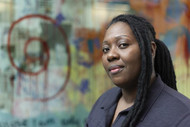Artist interview: Manyi Takor on the 2022 big walls & windows project
3rd Jan 2022
The Big Walls and Windows Project 2022, sponsored by Liquitex and Cass Art, is an opportunity for students at Central Saint Martins and Camberwell College of Arts to make temporary artworks at each site, on a scale that would normally be prohibitive due to material and equipment costs.
Selected from a panel of judges for the Central Saint Martins project, Manyi Takor’s winning proposal “Hidden Identities” examines how identity is formed by experiences often related to the expectations of others; it probes the dissonance from dwelling along liminal margins. It asks the audience to consider what acceptance and equity really mean in a space where expected and acceptable values are incongruent with the ego.
We caught up with Manyi to find out more about her experience and how she approached the project.
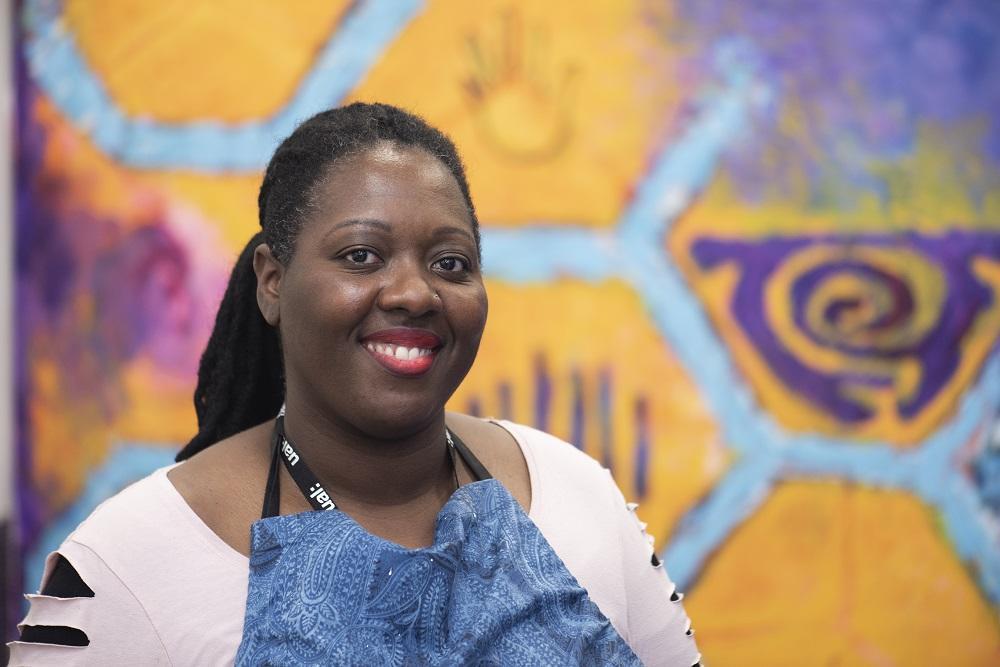
Hi Manyi! Congratulations again on being selected for the 2022 Big Walls and Windows Project in Central Saint Martins. Can you tell us about your proposal and what made you apply for the Big Walls & Windows project? What appealed to you about working on such a large scale?
Hello and thank you very much. I love making art and will explore any opportunity that stretches or expands my skills. For the last few years, I have been obsessed with existentialism and cultural intersectionality and these are such expansive ideas that one needs space to explore them. At home, the size of my paintings have doubled, from 80cm x 80cm to about 1.5m x 1.8m as I respond to thoughts and feelings that arise from these investigations. The observe, record and negotiate characteristics of exploration of these subjects were perfect for the context of a window. The opportunity to develop those ideas in a space of this size was like taking the lid off the cookie jar; too good to resist.
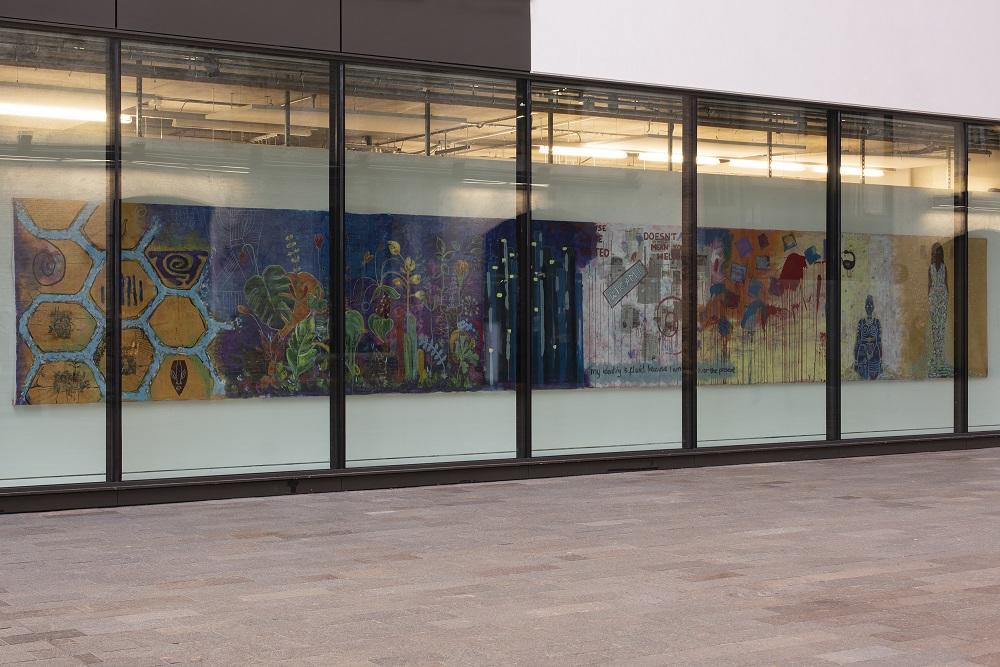
Now you’ve completed the installation, how did you
find the experience and were there any big challenges?
This may sound strange but I no longer worry about anything. After my diagnosis
of Fibromyalgia, it took a great amount of work to find a new baseline. I know
my limits and when they can be pushed and stretched. The timing of the project
was great because the work could be done during the break. This meant I didn't
have to worry about missing lectures while pushing my physical limits - that
would have been a little too much. Of course, nothing is ever completely
problem-free; there was a delay with materials which could not be helped
because of Christmas logistics. That created time-based pressure, but my friend
and fellow XD1 student, Xinyu Liu got stuck in with me and was an incredible
help. She also provided timely crits which was fantastic. I had to make changes
and problem solve as we went along, so the process was stressful and beautiful.
I would do it all over again!
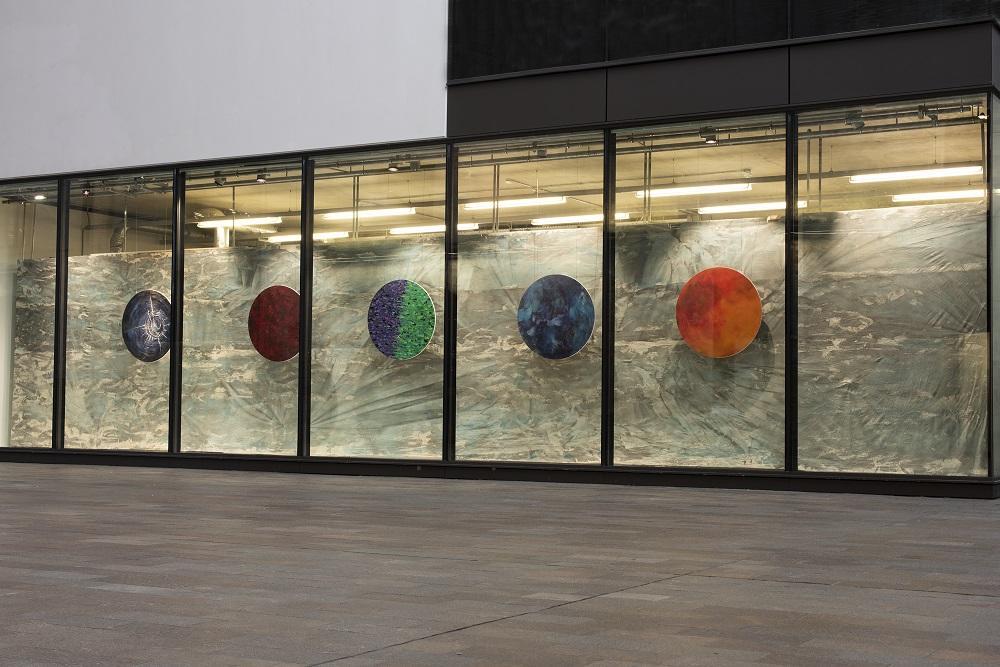
The right-hand window displays a powerful work
featuring 5 circular abstract paintings, representing the 5 stages of grief.
Each painting has a thematic colour and you’ve approached the application of
paint differently, could you explain your thought process behind this?
The circular canvases speak to the never-ending cycle
of negotiations we have to engage in as we consume information. Depending on
the value of this information we go back and forth through these stages,
sometimes skipping one or two. At other times, we dwell in one stage longer
than may be healthy for us.
If we think carefully about the times when we are
gripped by a strong emotion, we are usually riding parallel or criss-crossed
waves of several feelings. Anger, for example, can be an amalgamation of fear,
disappointment, disgust, and other feelings, even love. These works attempt to
capture the nuance of those adulterated emotions and the different styles are
my interpretation of those experiences.
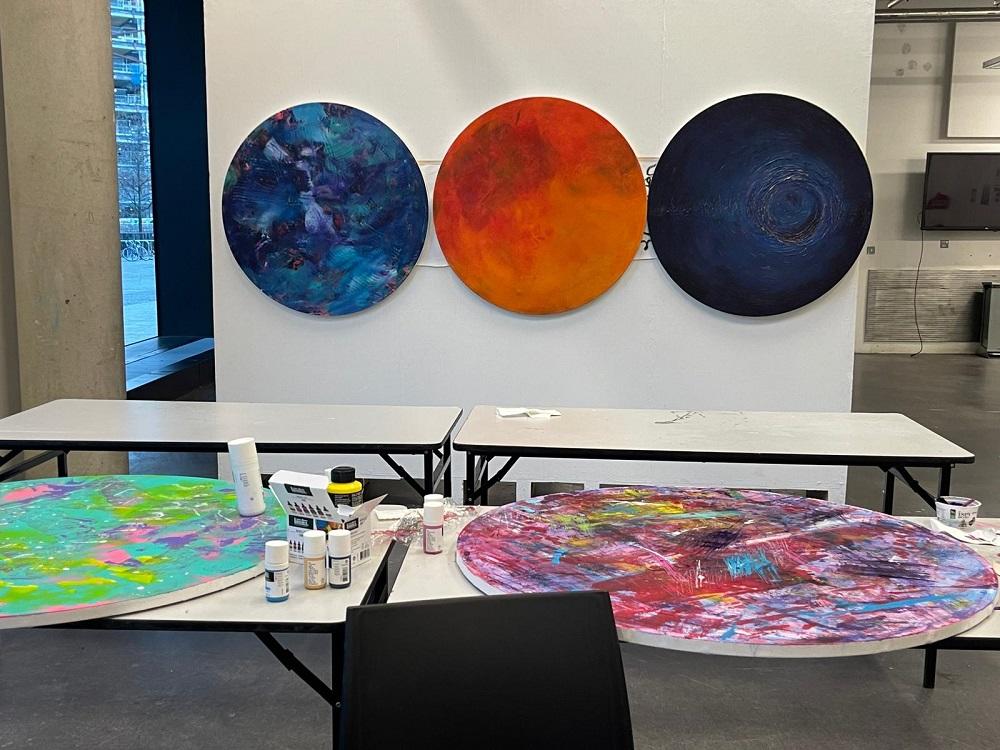
How did you find working with Liquitex paints and
mediums, did you find the materials shaped the artwork in a new way for you?
One word - sublime. The underpainting for all of the
canvases was made from a mixture of titanium white, primary red, pouring medium
and water. The first stroke of the brush through that mix was other worldly.
The pigment load, the smoothness, the flow - just beautiful. The responsiveness
of the materials certainly encouraged me to be more expressive with the work
and really push my ideas. As well as the paints, I used acrylic inks and a few
of the texture mediums including string gel, sand and heavy gel. The different
mediums compliment each other beautifully to create a vast arsenal of colours
and textures. I plan to continue to test these materials and see what they can
do.
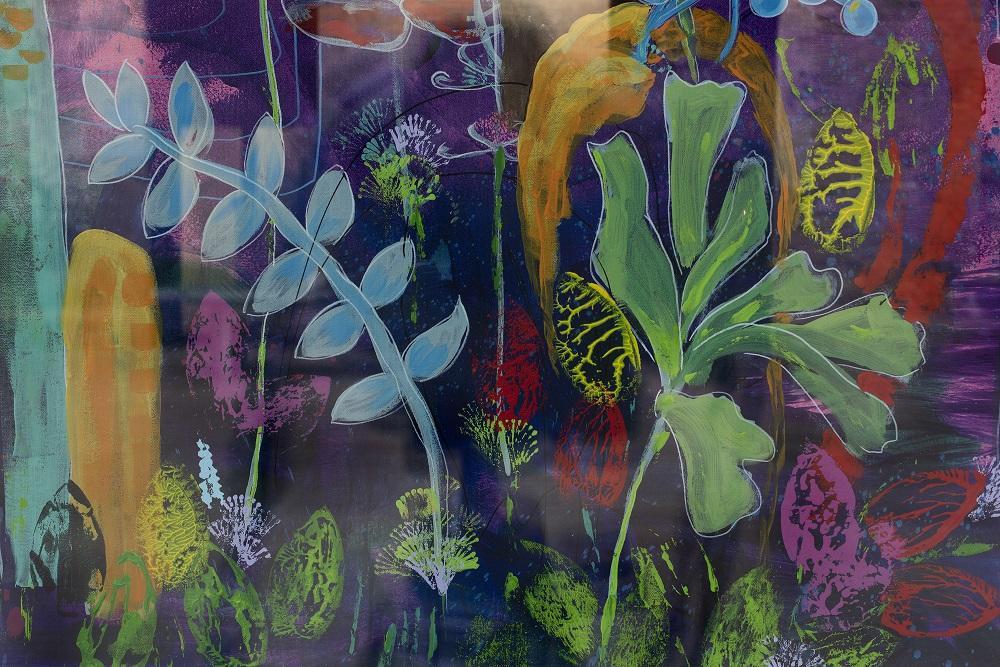
Can you tell us how you tackled the project step by step?
Lists. I love lists! Although I knew what I wanted to
express, the topic is vast. The first step involved creating a mind map of
every strand of every thought. Then I focused on the words which tugged at me.
Next, I created a smaller version of the canvas with a timeline and visual
associations. This enabled me to create a timetable based on how much work I
thought it would take to create the visual.
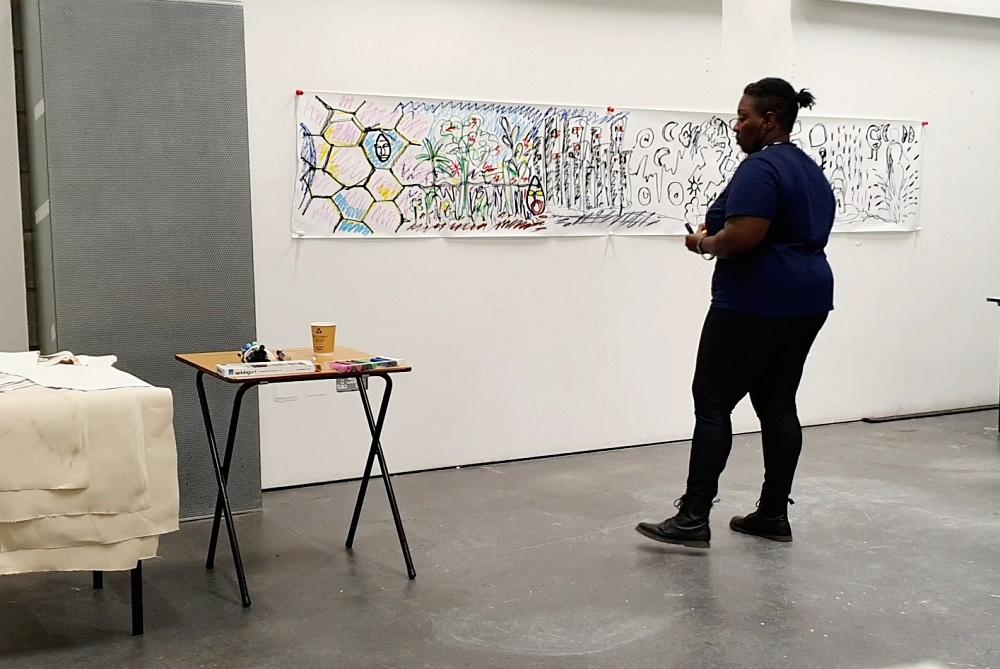
Once painting started, it was a case of transferring those ideas and feelings to the larger canvas, allowing for changes where certain ideas contracted, expanded or didn’t work at all. Lists and plans help me to organise my thoughts but the execution is always more intuitive; a conversation between the canvas and I. I tell it what I want to say and it tells me what it wants to be.
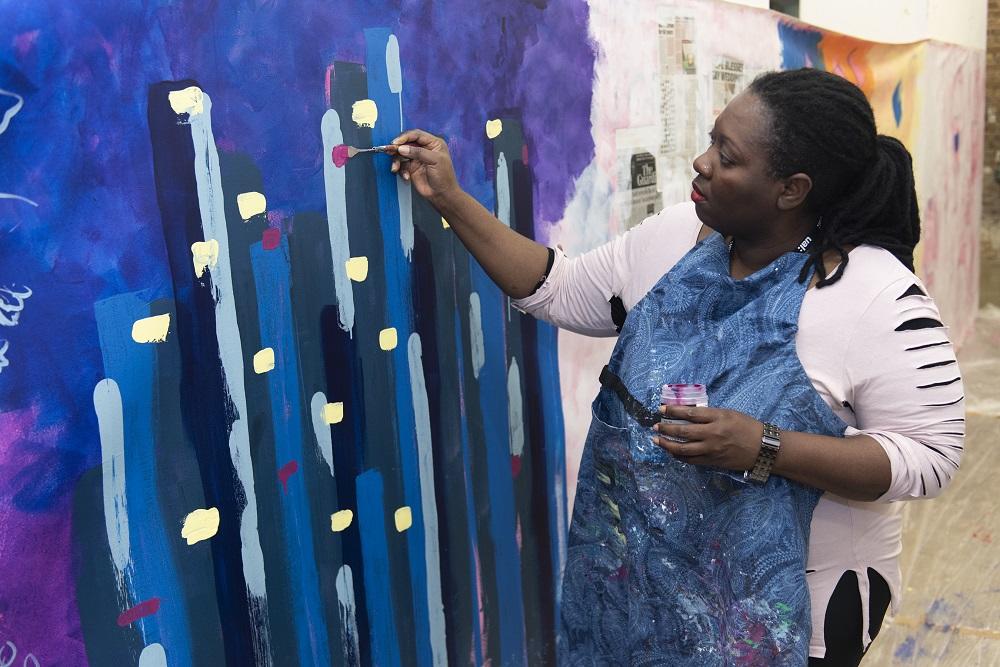
How do you hope the passing public will respond to
the work?
That's an interesting one. The Crossing is a public
space, sometimes slow and at other times fast-paced. It was important that the
work was accessible to both groups of people and I hope it does that. I would
love it if they stop and look at it, question it, take and share photographs,
and then think about it some more. Hopefully, whatever their interaction with or
experience of it, they'll understand that its message is that it's okay to be
who they are. It is an invitation to be a little kinder to themselves and
others.
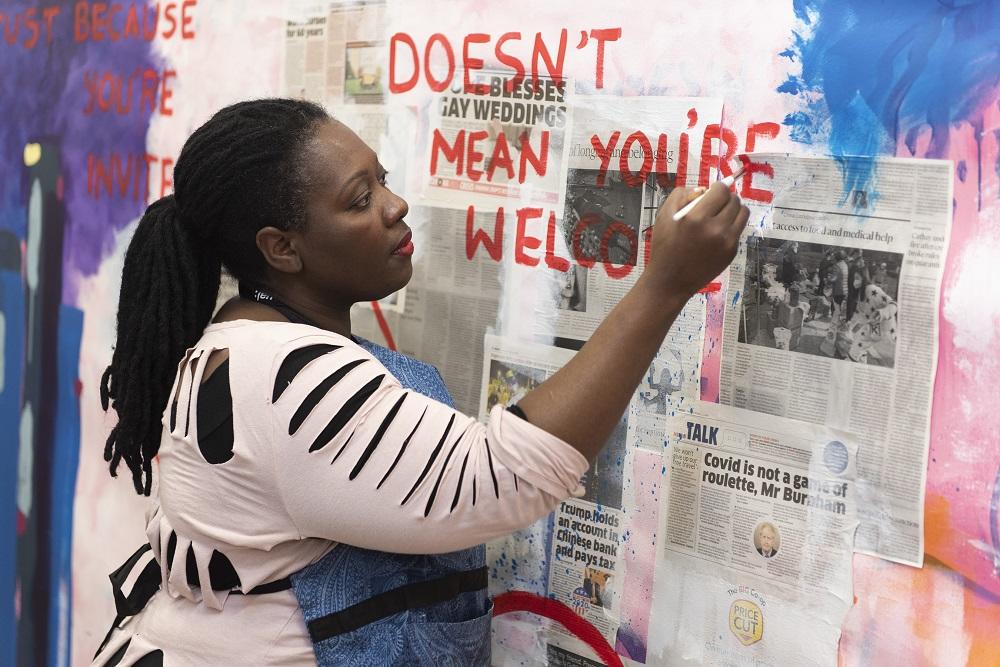
What are your final thoughts on the project? Has
it helped you to develop as an artist and do you feel you’d like to tackle more
site-specific artwork installations in the future?
Most definitely. It was amazing to develop a piece
that responds to the space it is installed in. Getting everything together
involves so many different people working together and it was an invaluable
experience to negotiate that. As an autistic person, I am quite rigid in
certain ways and this process taught me that I can make small shifts without
losing control. That gives me confidence that I can tackle more site-specific
work in the future.
Another thing artists often work on is developing a visual language. Anyone who sees this body of work will quickly realise there are many styles and elements employed in telling this story - drawing, painting, collage, impressionism, abstraction, symbolism... Because my work comes from a visceral place, I wondered whether these different styles would confuse my audience. Completing this piece cemented the idea that it is okay to work however I please and the audience who stick with me will learn and hopefully accept this about me. Those who love my work will love it and those who do not will not and that's okay.
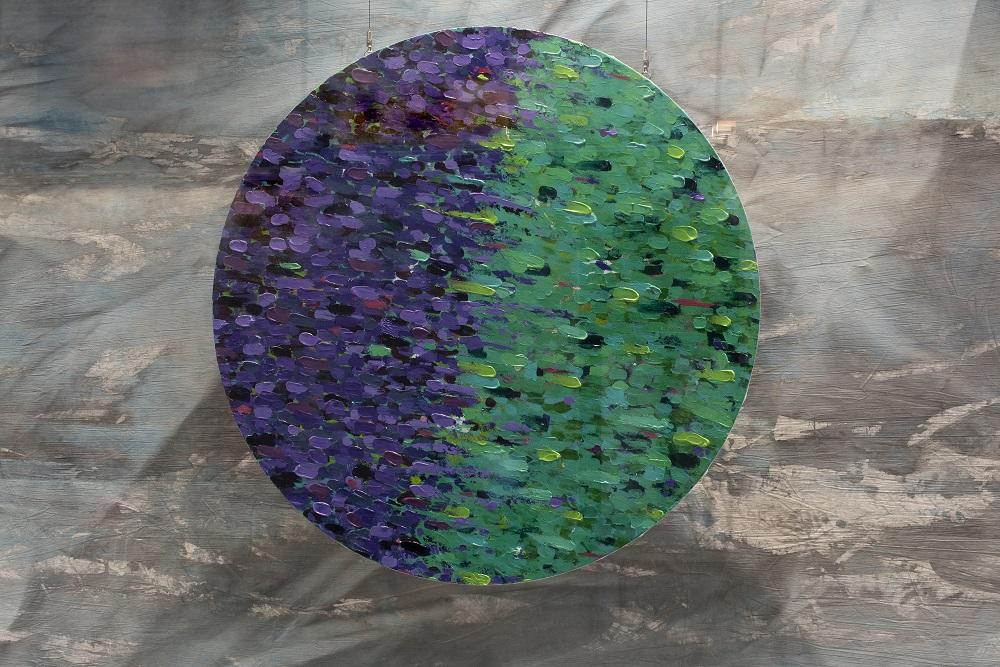
And finally, what’s next for you?
I have got more lists. They are quite dynamic and will change with time. At the
top of that list is taking a little break. Completing this work in such a short
period of time necessitated borrowing energy from future stores. I need to pay
that back or my body will rebel.
Once rested, I want to continue to develop a project I started in October last year. It involves examining spaces beyond our purview, starting with the question: What came before the Big Bang? I am fascinated by scientific theory versus Biblical narrative and can't wait to sink my teeth into that.
I am also planning to develop more work and update my website, with a view to approaching galleries. However, real-time communication is something I struggle with, so if there are any art agents reading this...
Website: manyitakor.uk
Thanks Manyi!
See Manyi’s Big Walls and Windows installation is on display at The Crossing, Central Saint Martins, 1 Granary Square, London N1C 4AA until 20th February 2022.
Feeling inspired?
Read our interviews with Alice Bajaj and Sarah Savage, selected for the Central Saint Martins and Camberwell College of Arts Big Walls and Windows 2021 project on the Cass Art Blog.
Image credits: Images 4 & 6 Manyi Takor, all other images photography @petercattrellphotography.

